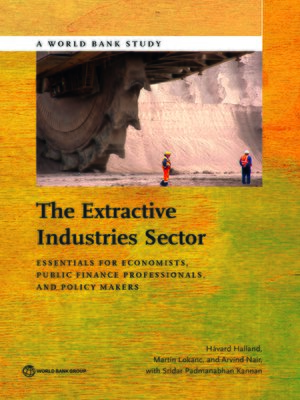The Extractive Industries Sector
ebook ∣ Essentials for Economists, Public Finance Professionals, and Policy Makers · World Bank Studies
By HÃ¥vard Halland

Sign up to save your library
With an OverDrive account, you can save your favorite libraries for at-a-glance information about availability. Find out more about OverDrive accounts.
Find this title in Libby, the library reading app by OverDrive.



Search for a digital library with this title
Title found at these libraries:
| Library Name | Distance |
|---|---|
| Loading... |
The extractive industries (EI) sector occupies an outsize space in the economies of many developing countries. Economists, public finance professionals, and policy makers working in such countries are frequently confronted with issues that require an in-depth understanding of the sector; its economics, governance, and policy challenges; as well as the implications of natural resource wealth for fiscal and public financial management. The objective of the two-volume Essentials for Economists, Public Finance Professionals, and Policy Makers, published in the World Bank Studies series, is to provide a concise overview of the EI-related topics these professionals are likely to encounter.This first volume, The Extractive Industries Sector, provides an overview of issues central to EI economics; discusses key components of the sector’s governance, policy, and institutional frameworks; and identifies the public sector’s EI-related financing obligations. Its discussion of EI economics covers the valuation of subsoil assets, the economic interpretation of ore, and the structure of energy and mineral markets. The volume maps the responsibilities of relevant government entities and outlines the characteristics of the EI sector’s legal and regulatory frameworks. Specific key functions of the sector are briefly discussed, as are the financial structures that underpin environmental and social safeguards; investment of public revenues generated from oil, gas, or minerals; as well as extractive-based economic diversification. The authors hope that, economists, public finance professionals, and policy makers working in resource-rich countries—including decision makers in ministries of finance, international organizations, and other relevant entities—will find the study useful to their understanding and analysis of the EI sector.







